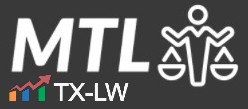The IRS has ten years to collect unpaid taxes after assessment. But that deadline isn’t always final.
Those with unpaid tax debts often seek payment plans to be able to pay their tax liabilities over time. When a taxpayer requests or enters into an IRS installment agreement, the clock on the collection statute stops running. The question is: for how long?
These rules matters whether you’re negotiating a payment plan, evaluating collection alternatives, or advising considering the strategic timing of collection resolution options. The wrong move can inadvertently extend the government’s collection window, while the right strategy might run out the clock.
United States v. Phelps, No. 7:25-CV-00014-BO (E.D.N.C. Nov. 18, 2025), provides an opportunity to examine the mechanics of collection statute suspensions and extensions arising from installment agreements. It gets into questions about what happens when the government files suit after the apparent expiration of the ten-year collection period, claiming that an installment agreement extended its deadline.
Contents
Facts & Procedural History
Phelps and Yamaoka owed $11 million in federal income taxes for the 2012 tax year. The couple filed their married filing jointly return to report this balance. The IRS then assessed the tax liability for them on September 29, 2014.
The balance remained unpaid for over 10 years. Interest and penalties accumulated, bringing their total liability to over $24 million by late 2024.
On December 23, 2019, Phelps and Yamaoka submitted a request for an installment agreement to the IRS. The IRS accepted the agreement on April 3, 2020. The agreement remained in effect for approximately 15 months before being terminated on July 7, 2021.
On January 27, 2025, the government filed suit to reduce the assessment to a judgment and to foreclose federal tax liens on four properties on Trails End Road in Wilmington, North Carolina, where the taxpayers resided. The complaint also named Bank OZK and New Hanover County as defendants because they held potential interests in the properties.
Phelps and Yamaoka responded by filing a motion to dismiss under Federal Rule of Civil Procedure 12(b)(6). Their argument was straightforward: the tax was assessed on September 29, 2014, and the complaint was filed on January 27, 2025. That’s more than ten years. Under the tax code’s collection statute, the case was time-barred.
The government opposed the motion by arguing that the installment agreement suspended the limitations period. It claimed that under the suspension provisions, the filing deadline was extended to February 8, 2025, making the January 27, 2025 complaint timely.
The 10-Year Collection Statute of Limitations
The tax code imposes a time limit on the IRS’s ability to collect assessed taxes. Section 6502(a) provides that where the IRS has properly assessed a tax, “such tax may be collected by levy or by a proceeding in court” but only if the levy or proceeding is begun within ten years after the assessment. This period is the Collection Statute Expiration Date or CSED.
Each assessment has its own CSED. If a taxpayer has unpaid liabilities from multiple years, each year’s assessment starts its own ten-year clock. The ten-year period begins on the date of assessment. For most taxpayers, this is the date they file their return and the IRS accepts it. For taxpayers who don’t file, the assessment date might be when the IRS files a substitute for return on their behalf. For adjustments arising from audits, the assessment date is when the IRS formally records the additional tax liability after the examination concludes.
During this ten-year window, the IRS can pursue collection through administrative means or judicial proceedings. Administrative collection includes levies on wages, bank accounts, accounts receivable, and other property. It includes filing notices of federal tax lien to establish priority against other creditors. Judicial collection involves filing suit in federal district court to reduce the assessment to judgment and foreclose on property.
Once the CSED expires, the IRS loses its ability to use these collection tools. The IRS cannot file new levies or initiate new judicial proceedings. However, levies that attached to property or rights to payment before the CSED expired can continue to operate. The IRS can also retain any refunds or credits arising after the CSED has passed.
When the Collection Statute Gets Suspended
The ten-year period is not always a continuous countdown. Various events can suspend the statute, meaning the clock stops running temporarily. When the suspension ends, the clock resumes from where it left off. These suspension periods effectively extend the IRS’s collection authority beyond the original ten-year mark.
Section 6503 of the tax code says that several circumstances suspend the collection statute. For example, the IRS cannot collect while a taxpayer is in bankruptcy, so the statute is suspended during bankruptcy proceedings plus an additional six months. Also, the statute is suspended while the taxpayer is outside the United States for a continuous period of at least six months. And it is also suspended while a case is pending in U.S. Tax Court and for 60 days afterward.
One of the most common suspensions involves collection due process hearings. When a taxpayer requests a hearing to challenge a proposed levy or lien filing, the statute is suspended from the date the IRS receives the request until the date the determination becomes final. If the taxpayer appeals to court, the suspension continues through that appeal process. These hearings can easily add a year or more to the CSED.
Installment Agreement Requests Suspend the CSED
Section 6331(k) addresses when the IRS is prohibited from levying on a taxpayer’s property. When levy is prohibited, the collection statute is suspended. This provision specifically applies to installment agreement requests and creates one of the most significant CSED suspension periods that taxpayers encounter.
The statute prohibits the IRS from levying while a request for an installment agreement is pending with the IRS. What does “pending” mean? The request is pending when it provides sufficient information to identify the taxpayer and proposes specific payment terms. It remains pending until the IRS either accepts the agreement, rejects it, or the taxpayer withdraws the request.
During this pending period, the CSED clock stops. If a taxpayer submits an installment agreement request with two years remaining on the CSED, and the IRS takes 90 days to review and accept the request, those 90 days don’t count against the two years. The taxpayer still has two years remaining after the request is approved.
The suspension continues for 30 days after the IRS rejects an installment agreement request. This gives the taxpayer time to exercise their appeal rights. If the taxpayer timely files an appeal of the rejection, the suspension continues throughout the appeal process until a final determination is made. The same rules apply if the IRS proposes to terminate an existing installment agreement. The statute is suspended for 30 days after the proposed termination, and throughout any appeal of that termination.
These suspension periods can add up quickly. Consider a taxpayer who requests an installment agreement that remains under review for 60 days before being rejected. The taxpayer appeals, and the appeal takes 180 days to resolve. The total suspension is 270 days (60 days pending, 30 days after rejection, and 180 days on appeal). That’s approximately nine months added to the CSED.
The statute does not suspend while the installment agreement is in effect. Once the IRS accepts an installment agreement and it becomes effective, the CSED clock resumes running. The taxpayer makes monthly payments while the collection statute continues to tick down.
This leads to a strategic consideration that taxpayers have to make. If a taxpayer has a short time remaining on the CSED and cannot afford to fully pay within that period, entering into an installment agreement might seem like a solution. But if the agreement will take longer than the remaining CSED to fully pay the liability, the taxpayer needs to think carefully about whether to request it.
What Happened in the Phelps Case
One would think that the IRS would track these dates carefully because once a CSED expires, the government loses its legal authority to collect that particular liability through IRS tax collections methods. It does not do this, however. It is common for the statute of limitations to expire with little or no collection activities. The Phelps case is an example.
The Phelps case is one where the government had to rely on installment agreement suspensions to extend collection authority to justify their tax collection lawsuit. The taxpayers had their income tax assessed on their account by the IRS on September 29, 2014, creating an original CSED of September 29, 2024. They requested an installment agreement on December 23, 2019, which was accepted on April 3, 2020 and terminated on July 7, 2021.
The government calculated that these events suspended the CSED long enough to extend the deadline to February 8, 2025. Under this calculation, the January 27, 2025 complaint was timely by less than two weeks. But the government’s complaint that it filed in the lawsuit didn’t include any allegations about the installment agreement or the suspension periods.
The taxpayers moved to dismiss, arguing the case was filed more than ten years after the assessment. The government opposed the motion by arguing that the installment agreement tolled the statute, but it never amended its complaint to add these allegations. The court found that when a complaint is facially untimely, the plaintiff must plead the facts demonstrating why the suit is nevertheless within the limitations period.
Because the complaint contained no allegations about the installment agreement, and because the government never formally moved to amend, the court granted the motion to dismiss. The case was dismissed in its entirety, likely ending the government’s ability to collect over $24 million through judicial proceedings.
The Takeaway
This case shows that while the suspension periods resulting from installment agreements can extend the government’s collection window, the government must properly plead those facts when filing suit beyond the original ten-year period. Beyond the implications for bringing a tax colleciton lawsuit, these rules create important strategic considerations for taxpayers deciding whether to request an installment agreement, particularly when little time remains on the collection statute. As noted in the case, installment agreements can suspend the collection statute of limitations during specific periods: while the request is pending, for 30 days after rejection or proposed termination, and throughout any appeal of those actions. These suspensions can add months or years to the IRS’s collection authority, potentially extending it well beyond the original ten-year deadline.
Watch Our Free On-Demand Webinar
In 40 minutes, we'll teach you how to survive an IRS audit.
We'll explain how the IRS conducts audits and how to manage and close the audit.


